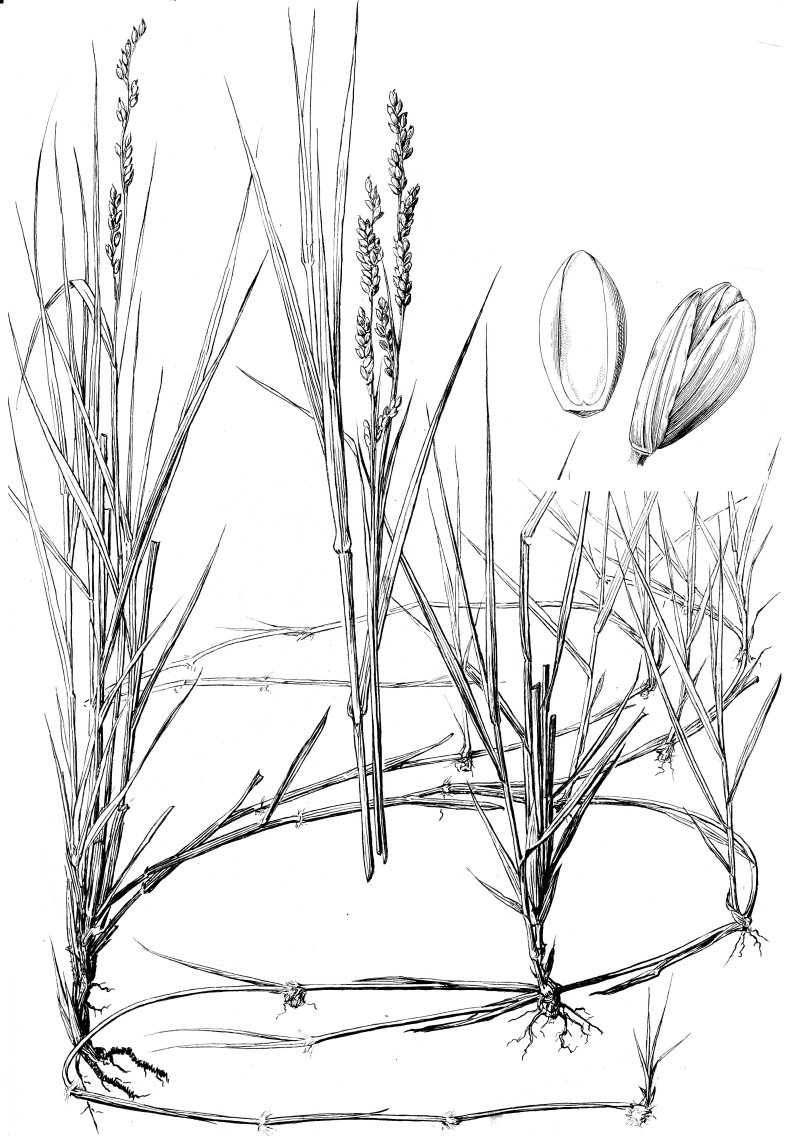
Panicum obtusum H.B.K. Vinemesquite Habit: Tufted perennial from a knotted crown with a more or less tufted rootstock, producing long creeping stolons, sometimes 2 m. long, with long internodes and swollen, conspicuous, woolly nodes. Culms: Compressed, 20-80 cm. tall, decumbent at the base, glabrous. Blades: Leaf-blades 3-20 cm. long, 2-7 mm. wide, those of the stolons shorter and narrower, involute towards the tip, glabrous or nearly so. Sheaths: Shorter than the internodes, the very lowest pubescent. Ligule: Membranous, about 1 mm. long. Inflorescence: Panicle included or short-exserted, 3-12 cm. long, about 1 cm. wide, densely flowered. Spikelets: Short-pedicelled, 3.2-3.8 mm. long, about 1.5-1.8 mm. and about 2 mm. thick, obovoid, secund, glabrous, green at first, later turning brownish, often in pairs along one side of the rachis. Glumes: First about one fourth shorter than the spikelet, 3-nerved, sometimes 5-nerved, second glume and sterile lemma subequal, the second glume 5-7-nerved, sometimes 9-nerved. Sterile lemma 5-7-nerved subtending a palea and staminate flower. Fruit: About 3-3.5 mm. long, 1.5-1.7 mm. wide, subacute, smooth and shining, slightly minutely pubescent near the apex. Habitat: Sandy and gravelly soil, banks of streams and ditches. Kansas Range: Southwest fourth. Use: A perennial forage grass in the southwest.